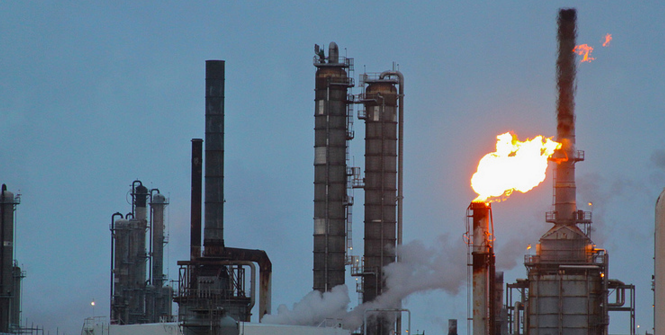Removal of Iran Sanctions: The New Geopolitics of Oil?

Oil prices are at the mercy of geopolitics with key states vying for market influence and security. How does the lifting of sanctions against Iran, the return of the US to the oil export business and Saudi Arabia’s leadership within OPEC bode for the year ahead?
To start, it’s necessary to understand the geopolitical dynamics underpinning current prices.
Low oil prices are the direct result of the world’s largest oil exporter, Saudi Arabia, seeking to restore its market share amid the North American shale oil boom. High oil prices just a few years ago (hitting a peak of $147 in 2009) drove development of non-conventional oil, entrants that now threaten Saudi’s market dominance. The world’s swing producer had typically cushioned commodity shocks by alternately selling or withholding supply from the market. But Saudi Arabia has been neglecting that role for the last year. Instead, production has remained at record highs and is set to continue even as oil prices fall to 12 year lows.
Saudi Arabia, as leader of OPEC, is employing the Walmart strategy, whereby products are sold at or below cost to drive high-price competitors out of the market. In 2014, the Saudi Petroleum and Minerals Minister warned that the strategy would continue even if oil fell to $20 a barrel. This now seems a very real possibility.
Why would the Saudis short-sell their main source of income? The answer is long-term economic security. Saudi Arabia is dependent on oil revenues for the majority of government revenue (more than 80 percent): revenue which is distributed throughout government and the population. As an example of the largesse that is frequently associated with “rentier states”, the new King Salman distributed two month salary bonuses to Saudis after his ascension to the throne in late 2014 (even as oil fell to $50/barrel). Despite drafting plans to diversify its economy starting the 1970s (the oldest diversification plan in the GCC states), Saudi Arabia is effectively no closer to sustaining a non-rentier economy. This means that the Kingdom requires close to $95/barrel to balance its budget and has been running a $38 billion deficit to fund expenditure during the downturn of its own creation.
With global sanctions against Iran lifted last week, the oil glut seems set to continue. As part of the Iran Deal, Tehran had its access to the international banking system and commodities market restored and will soon contribute its share of oil to the global oversupply. Speculation is high that Iran will seek to ramp up production to recover lost income. However, analysts suggest that scope for expansion is limited. Tehran cannot hope to reclaim its former pre-Iranian revolution output levels (a much-vaunted domestic goal) without $140 billion in investment in its energy infrastructure, particularly tankers and ports, and technology. This would also require access to enhanced oil recovery technology, some of which is off-limits to Iran due to US technology export controls. Indeed, even with global sanctions lifted, the long-standing US trade embargo against Iran remains almost completely intact.
The US is another key player in current commodity prices. Along with Iran, the US is also getting back into the oil export game, though after a much longer absence. In December, Congress lifted the thirty-year ban on the export of US crude oil, originally put in place in the aftermath of the 1973 OAPEC crisis. Though most US oil is consumed domestically, all of these factors combine to further depress anticipated oil prices for the year ahead. Could 2016 be the year of $20 oil? Much ink has been spilled anticipating a floor for the price of oil, but predictions of $50, $40 and $30 have now come and gone.
Perhaps a better question is not how low can prices go but how long can they continue?
As I wrote last year, Saudi Arabia can sustain this strategy without the support of OPEC (which is rapidly evaporating along with lost revenue). Despite tensions within OPEC regarding the strategy, resistance is now futile. Desperate bids for revenue mean that producer states are more likely to oversupply even if only for marginal gain, rather than accrue further losses by withholding supply from the market. Saudi Arabia’s strategy has become quicksand for oil producing states: any attempt to escape only deepens the oil glut. As for Saudi Arabia, the IMF predicted that Saudi Arabia could survive financially for five years on its sovereign wealth fund alone.
Some analysts had previously heralded this as the death throes of a dying commodity: ‘the end of oil’. As evidence, they point to the growing population of substitutes such as natural gas and the global divestment strategy borne of climate change concerns. As part of this strategy, fossil fuels may yet become stranded assets: resources that will remain in the ground, too detrimental to the carbon budget to exploit. Though the divestment movement has thus far concentrated on coal, oil is seen in some quarters as the next target.
For now, oil is the football of politicians. Geopolitics is set to continue oil’s wild ride in 2016.
Dr Jennifer S Hunt is a Lecturer at the Centre for International Security Studies, University of Sydney. This article may be republished under a Creative Commons License.





